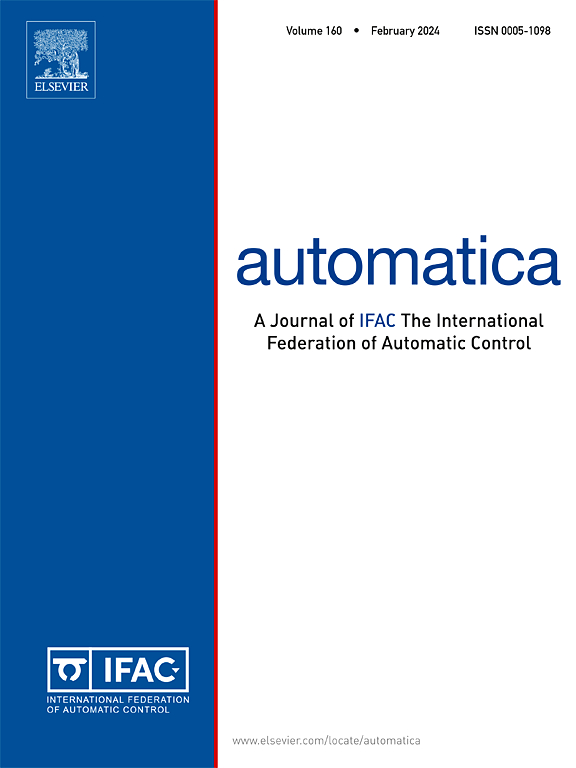Interval contractor-based reference governor for a class of uncertain nonlinear systems
IF 5.9
2区 计算机科学
Q1 AUTOMATION & CONTROL SYSTEMS
引用次数: 0
Abstract
This paper proposes a novel interval contractor-based reference governor design for a class of nonlinear systems containing both polynomial terms and unknown constant parameters which are valued in known bounded intervals. The reference governor ensures that input and state polynomial constraints are satisfied, despite uncertainties in the model and constraints. Its synthesis computes a maximal output admissible set (or MOAS), and requires adding new components to the state vector. It also uses interval analysis methods to shrink the bounds for the uncertain parameters over time. The MOAS computations are performed offline using a grid of the uncertain parameter bounds. Then, the reference governor is computed online by combining bisection algorithms and interval contractors.
一类不确定非线性系统基于区间收缩器的参考调速器
针对一类既有多项式项又有未知常数参数在已知有界区间内取值的非线性系统,提出了一种基于区间收缩器的参考调速器设计方法。参考调控器确保输入和状态多项式约束得到满足,尽管模型和约束存在不确定性。它的合成计算最大输出允许集(MOAS),并且需要在状态向量中添加新的分量。它还使用区间分析方法来缩小不确定参数随时间的界限。使用不确定参数边界的网格离线执行MOAS计算。然后,结合等分算法和区间收缩算法在线计算参考调速器。
本文章由计算机程序翻译,如有差异,请以英文原文为准。
求助全文
约1分钟内获得全文
求助全文
来源期刊

Automatica
工程技术-工程:电子与电气
CiteScore
10.70
自引率
7.80%
发文量
617
审稿时长
5 months
期刊介绍:
Automatica is a leading archival publication in the field of systems and control. The field encompasses today a broad set of areas and topics, and is thriving not only within itself but also in terms of its impact on other fields, such as communications, computers, biology, energy and economics. Since its inception in 1963, Automatica has kept abreast with the evolution of the field over the years, and has emerged as a leading publication driving the trends in the field.
After being founded in 1963, Automatica became a journal of the International Federation of Automatic Control (IFAC) in 1969. It features a characteristic blend of theoretical and applied papers of archival, lasting value, reporting cutting edge research results by authors across the globe. It features articles in distinct categories, including regular, brief and survey papers, technical communiqués, correspondence items, as well as reviews on published books of interest to the readership. It occasionally publishes special issues on emerging new topics or established mature topics of interest to a broad audience.
Automatica solicits original high-quality contributions in all the categories listed above, and in all areas of systems and control interpreted in a broad sense and evolving constantly. They may be submitted directly to a subject editor or to the Editor-in-Chief if not sure about the subject area. Editorial procedures in place assure careful, fair, and prompt handling of all submitted articles. Accepted papers appear in the journal in the shortest time feasible given production time constraints.
 求助内容:
求助内容: 应助结果提醒方式:
应助结果提醒方式:


